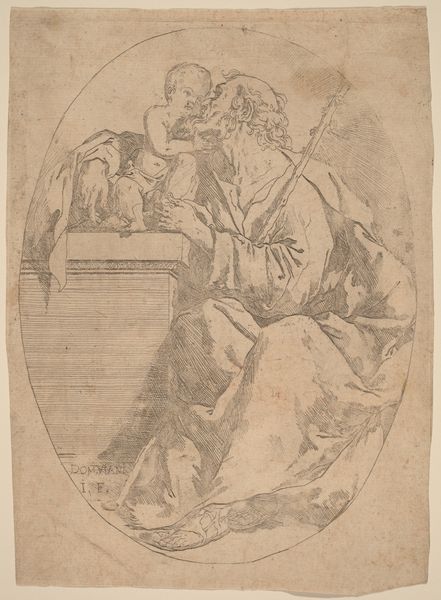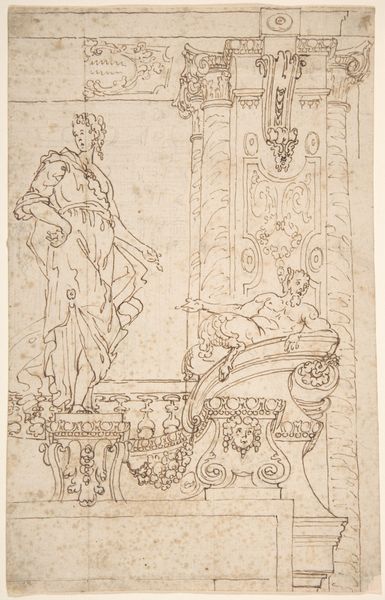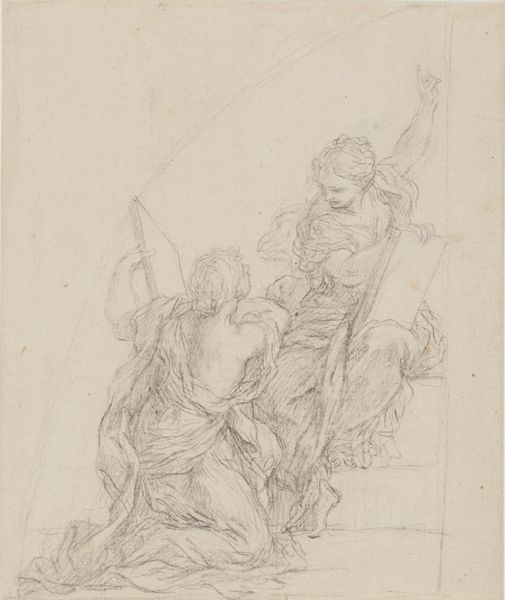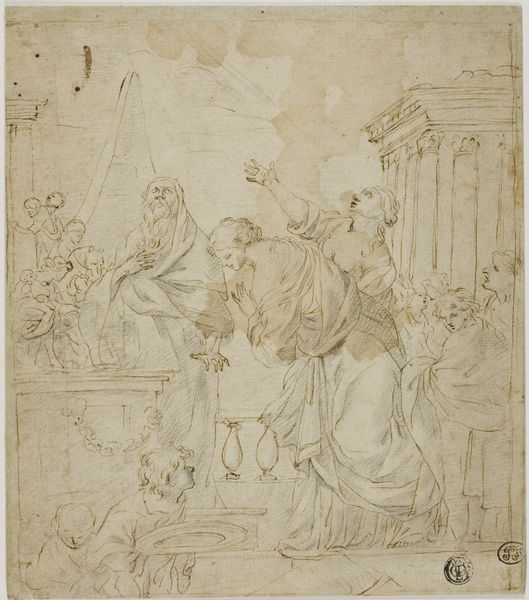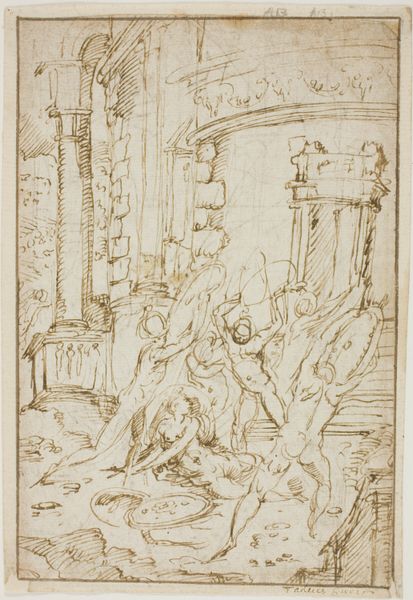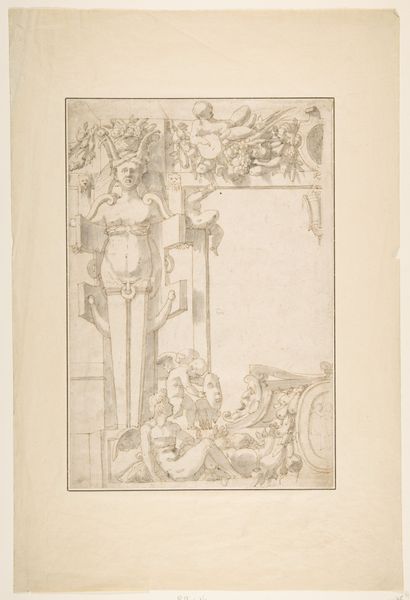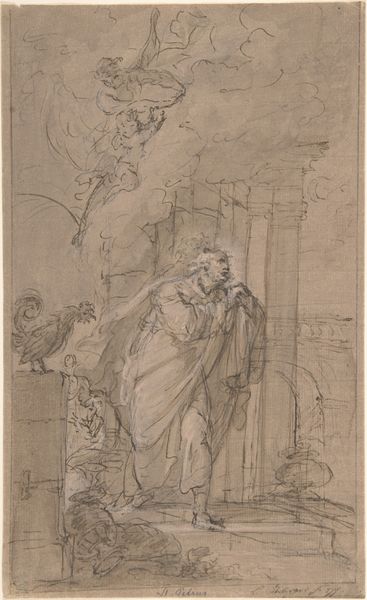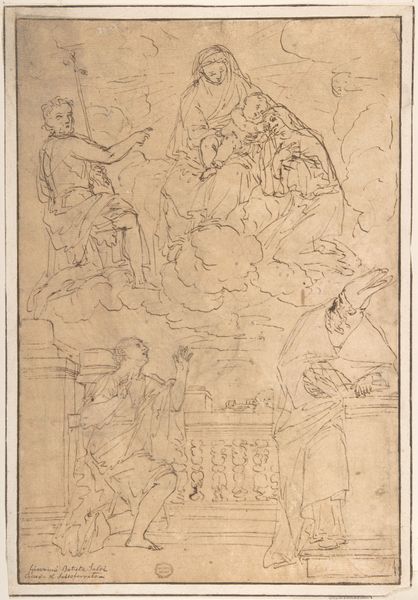
Saint Peter and Saint John Healing a Cripple at the Gate of the Temple 1534 - 1547
0:00
0:00
drawing, print, paper, ink
#
drawing
# print
#
figuration
#
paper
#
ink
#
history-painting
#
italian-renaissance
Dimensions: 9 15/16 x 7 5/8in. (25.2 x 19.4cm)
Copyright: Public Domain
Curator: Look at the energy of this piece. Here we have Perino del Vaga’s “Saint Peter and Saint John Healing a Cripple at the Gate of the Temple,” dating roughly from 1534 to 1547. Editor: My first thought is the immediacy of the draftsmanship. It’s just raw, exposed ink on paper, very little standing between us and the artist's hand. The lines are so frenetic. Curator: Indeed! Consider that it is currently held in the collection of the Metropolitan Museum, testament to the institutional desire to canonize certain depictions of Biblical scenes. The healing miracle here is deployed to confirm and bolster the position of the church at the time. Editor: Yes, but look at how the composition directs our eyes to the beggar’s body, a clear contrast with the implied opulence behind the temple gate. The physical rendering, the man's hunched form and tattered clothes; it feels charged with meaning about labor and destitution in the face of religious authority. What statement is he trying to make through the figure's physical positioning? Curator: The artist skillfully uses light and shadow to further dramatize the moment. Peter and John emerge as beacons of hope against this shadowed backdrop, echoing the narratives of religious redemption promoted during the Italian Renaissance. The medium also reflects its message, ink wasn't difficult to source during this time but how did Perino choose it as its vessel? Editor: Right, ink, being a comparatively cheap and available medium, implies accessibility. Was del Vaga deliberately democratizing access to the sacred stories, or was he constrained by available resources? These kinds of drawings are valuable insights into studio practices of the time and should inform our appreciation of them. Curator: I think it speaks more to the ways the Renaissance papacy, through artworks like this, constructed narratives of divine power to maintain social order. Editor: Perhaps, or maybe it simply shows the inherent tension between displays of power and underlying precarity—that something as fleeting as ink on paper could become so powerful. Curator: A potent reminder, perhaps, of the ongoing negotiation between material conditions, social narrative, and faith throughout art history. Editor: Absolutely, art like this urges us to reflect on the layers of labor, material accessibility, and artistic intention embedded in this moment of captured hope and pain.
Comments
No comments
Be the first to comment and join the conversation on the ultimate creative platform.

